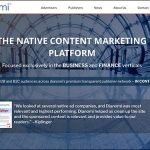Ionic Downloads $8.5M to Rev Up Business Around Open-Source Software

When trying to build a business on top of free software, step one is attracting a ton of users. Step two is figuring out how to make money.
Ionic has successfully checked the first box. Since launching its free, open-source software more than two years ago, more than 4 million developers worldwide have used it to create 2 million-plus apps. Now, the Madison, WI-based startup has its sights set on accomplishing step two.
An $ 8.5 million Series A funding round announced today could help. The additional cash comes from new investor General Catalyst Partners, which led the round, and previous backers Lightbank, Arthur Ventures, and Founder Collective. Ionic, an alum of the Techstars Cloud accelerator in San Antonio, TX, says it has raised $ 12.2 million from investors to date.
“This is a transition for us,” Ionic co-founder and CEO Max Lynch says in a phone interview. “We feel we have that critical developer base, and now is the time to focus on commercialization.”
Lynch and childhood friend Ben Sperry founded the company in 2012 and built a profitable business with Codiqa and Jetstrap, two Web-based products used to build the visual front end of websites and mobile apps with drag-and-drop tools that don’t require manual software coding.
But the company saw a bigger opportunity with Ionic, which allows developers to use Web-based languages like HTML, CSS, and JavaScript to make mobile apps that work across different platforms—meaning users can simultaneously create iOS, Android, and Windows apps. The software is geared toward Web developers, many of whom have never built a mobile app before. One of the goals is to help companies’ existing staff of Web developers quickly and easily build mobile apps, thereby saving businesses time and money they would’ve spent to hire or contract with more mobile-savvy developers.
The startup was founded as Drifty and technically is still incorporated under that name, but the firm is now marketing itself as Ionic, Lynch says—reflecting how it’s going all-in with that product. Other players in the field include Sencha and Xamarin, which Microsoft acquired earlier this year.
“In many ways, we feel like we’re just getting started with Ionic,” Lynch wrote in a blog post announcing the new funding. “I look up to projects like WordPress that changed desktop Web development and design forever, empowering millions of people to take part in the rapidly growing Web design economy, and I want Ionic to have that same impact on mobile. No one has really pulled that off yet, and the challenge and opportunity of doing that is what gets me out of bed in the morning.”
Lynch says his company began generating revenue from Ionic at the end of last year by charging monthly subscription fees for premium features and tools used with Ionic Creator, which enables rapid development of app prototypes via drag-and-drop software tools. (Ionic Creator is the successor to Codiqa, Lynch says.)
Ionic also intends to start charging fees this summer for premium products layered on top of its core software platform, Lynch says.
Perhaps the most lucrative prospect for Ionic is selling products and services to big companies. Lynch says his top priority right now is assembling a team to capitalize on that opportunity. The plan is to create an extension of Ionic’s main software that includes additional features around data security, encryption, and authentication, Lynch says. Ionic has hired developers with enterprise and security software experience, he adds.
Big firms like Caterpillar and Morgan Stanley have already built apps using Ionic, and the goal is to accelerate that initial traction. “We’re working with enterprise users for early pilots with expanded support and products,” Lynch says. “Part of what we’re doing with this funding is building out our enterprise business.”
Lynch says Ionic will tap the expertise of General Catalyst venture partner Donald Fischer, who gained knowledge of both open-source software and selling to big enterprises while he worked at Red Hat. “For us, it’s kind of a signal that there is a significant opportunity here, not only on the open source side, but on the commercial side,” Lynch says.
Ionic currently employs 20 people, up from 15 a year ago. It could grow to 30 by the end of 2016, with new hires primarily in business development and sales, as well as engineering, Lynch says.
The current venture funding environment is “supportive of companies that are being lean and not hiring like crazy,” Lynch says. “That’s the model we’ve done from the beginning, and it’s something we’ll continue to do.”
Lynch is an advocate of Madison and remains adamant that software companies like his can thrive outside of traditional tech hubs on the coasts. “Investors are interested in finding new opportunities that aren’t in saturated markets and overpriced markets like San Francisco,” he says. “That’s helped us stand out a little bit.”
Still, as the company builds up a sales operation, it might open offices in cities like San Francisco or Boston to tap into the enterprise sales talent there, Lynch says. But, he’s quick to add, the engineering team will remain in Madison and continue to grow. “We think it’s been a major advantage for us.”
(26)














